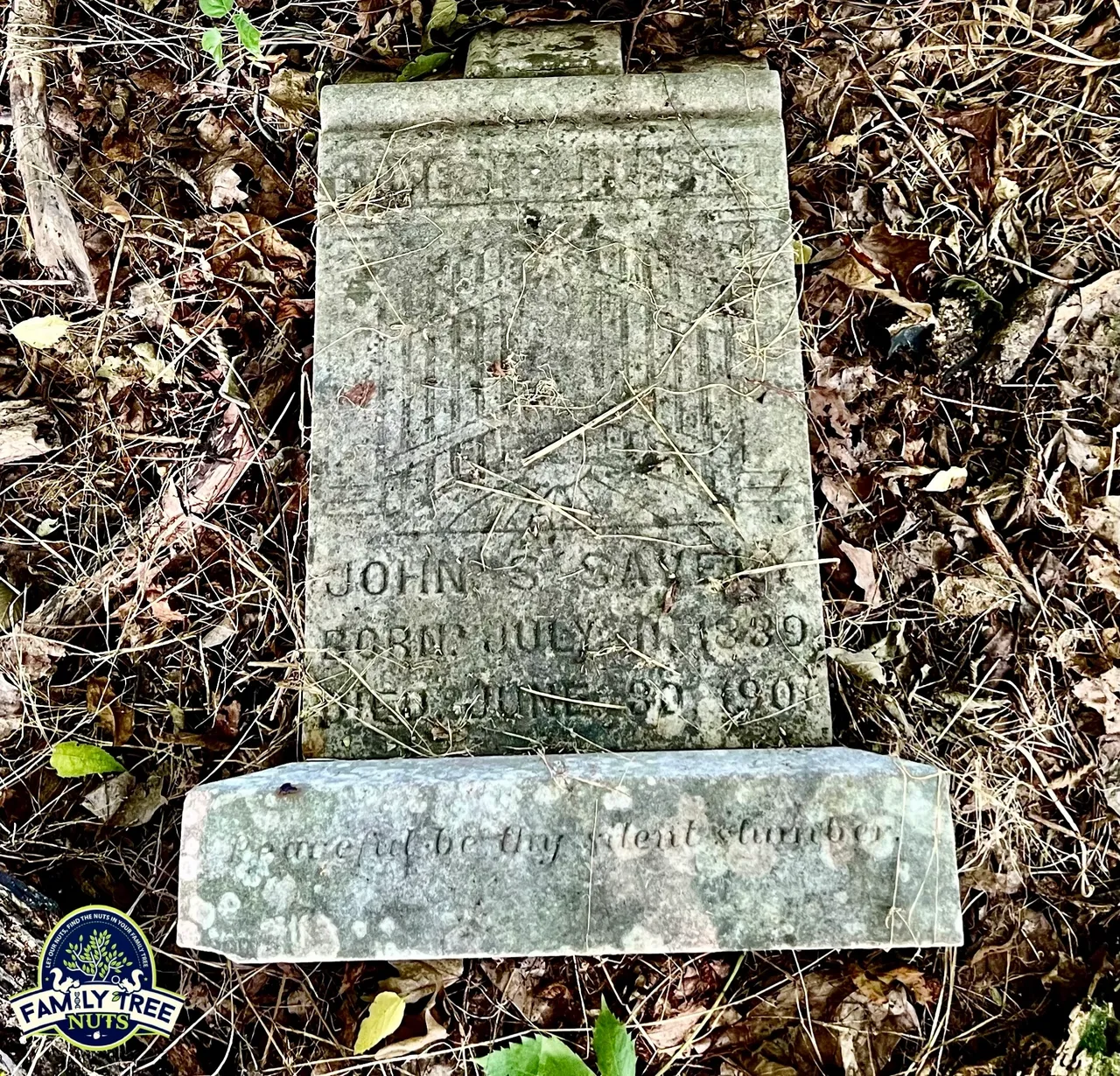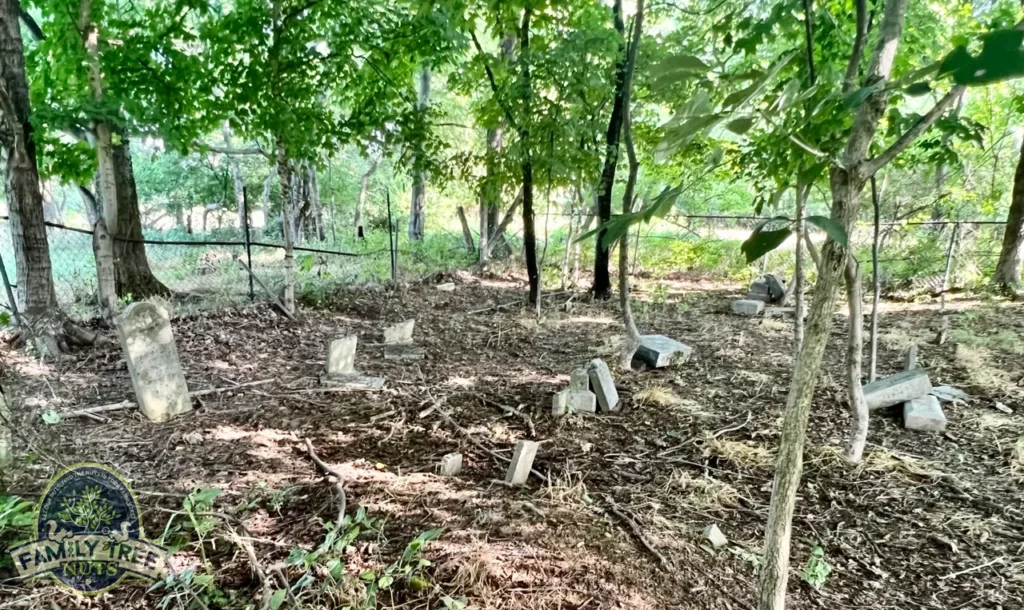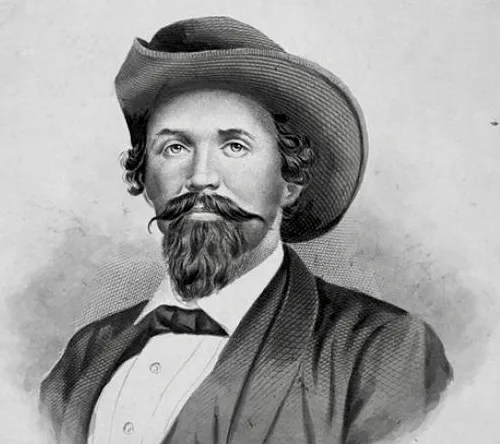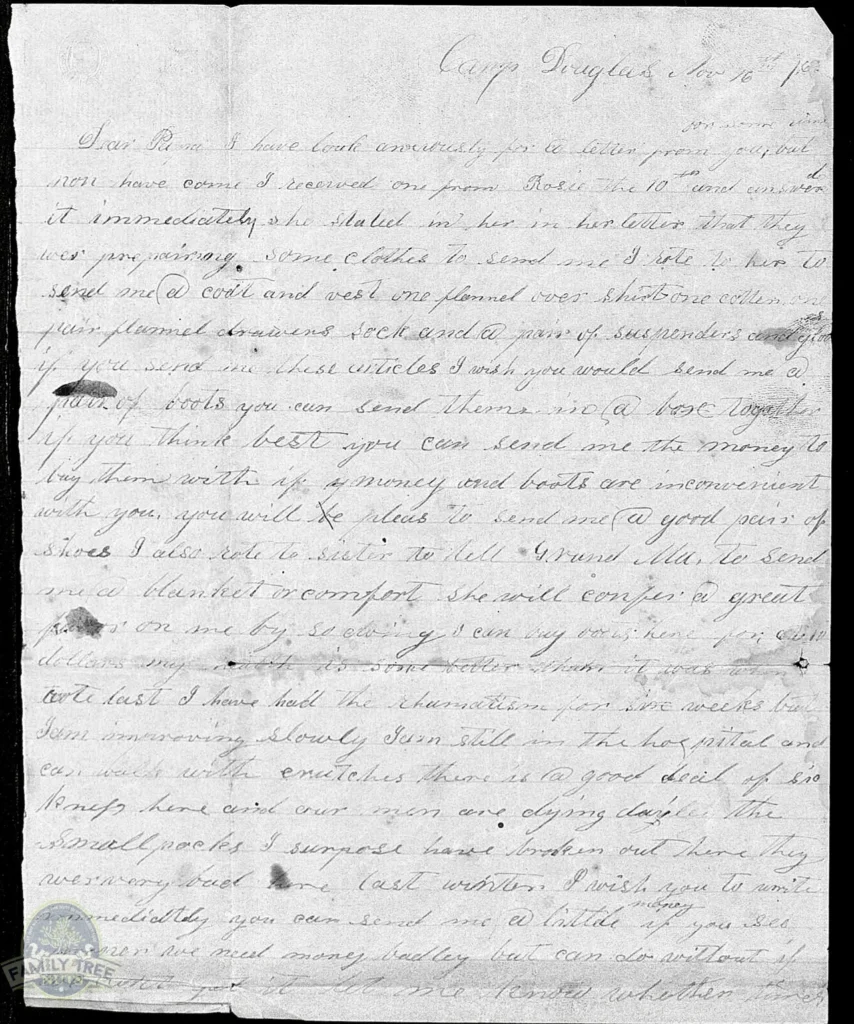
CIVIL WAR POW GRAVE FOUND IN LOST CEMETERY
We were so excited to have finally found it; the grave of my Great-Grandfather who had been a Civil War POW while serving with Morgan’s Raiders. The day we found the cemetery was a very important day to me personally because I had spent about a year looking for it. It is a cemetery that my family always knew existed but we struggled to find its exact location and I had to spend a good amount of time knocking on doors just to find it. We were so pleased that the current owner of the property allowed me to visit the cemetery.
The Savely Family Cemetery is located in Hendersonville, Sumner County, Tennessee, just North of Nashville, and is located on property that once belonged to our family. My Grandfather Charles Robb Savely was raised on the property and several of my ancestors are buried in the cemetery including my great, and great-great-grandparents. The cemetery is not in bad shape and is protected from overgrowth by large trees. It does need a little bit of work to reset some of the headstones that have fallen and a minor clean-up, which we are excited to do soon.

As I found the graves of my great and great, great-grandparents, I also found that some of their daughters and sons are also buried here, but without spouses, so that leads me to wonder if they never married.
This cemetery contains one of my favorite ancestors that has an amazing story. My Great-Grandfather John Sumner Savely enlisted in the Confederate Army and was one of about 1,200 soldiers that made up the unit that was called “Morgan’s Raiders”, under the command of General John Hunt Morgan. Most of the men in this unit were from North Middle Tennessee, or South-Central Kentucky, and they saw action all over that same region, as well as leading a raid into Indiana and Ohio. He was captured at Buffington Island, an island in the Ohio River, in July of 1863, and imprisoned at Camp Douglas, Illinois. He was later transferred to Point Lookout Prison Camp in Maryland where he stayed until the end of the war.

After his death in 1901, my great grandmother applied for widow’s pension. One of my prized family history possessions is a copy of her pension file, including an application she completed and submitted to the federal government requesting pension benefits because of his service in the Confederate Army. Included in that file are memos from two friends, that confirmed that he did serve. Also included is a letter that he wrote to his father while at Camp Douglas, Illinois requesting clothes and provisions. Needless to say, the letter is an important part of our family history.
Another neat story about his time serving with Morgan’s Raiders was his action at a nearby train tunnel. The Confederates wanted to stop supplies from getting to the Union in Nashville, so they collapsed the Big South Railroad Tunnel just outside of Gallatin Tennessee. My Great-Grandfather John S. Savely was active with his unit at that time, which makes it very likely that he was a part of this raid. As a result, for weeks the Union army was forced to offload all of their supplies onto wagon trains, at Bowling Green, Kentucky, and bring them to Nashville by road. In a short 90 days, the Union army had the tunnel back open and the flow of supplies resumed.

Morgan’s men attempted a couple of other times to collapse the tunnel but were never able to, as the Union army had put soldiers there to guard it for the rest of the war, because it was very important to the Western Campaign.
As I do more research into my own family, I am learning that, the more you dig, the more you learn. I encourage you to look into your family also, because just as I have, you are bound to find interesting stories. The stories are out there, one just needs to start looking. It’s important that we know about our past, because the more we know about who we are, and where we came from, the more we will know about the future.
I hope that you have enjoyed this story about my great-grandfather and my adventure to finally find his grave. It has been a rewarding experience for me and my family and we will definitely make sure that these ancestors are never lost again. Be sure to see the video about this story at the link below.
– Scott Denney, Historian, Family Tree Nuts
